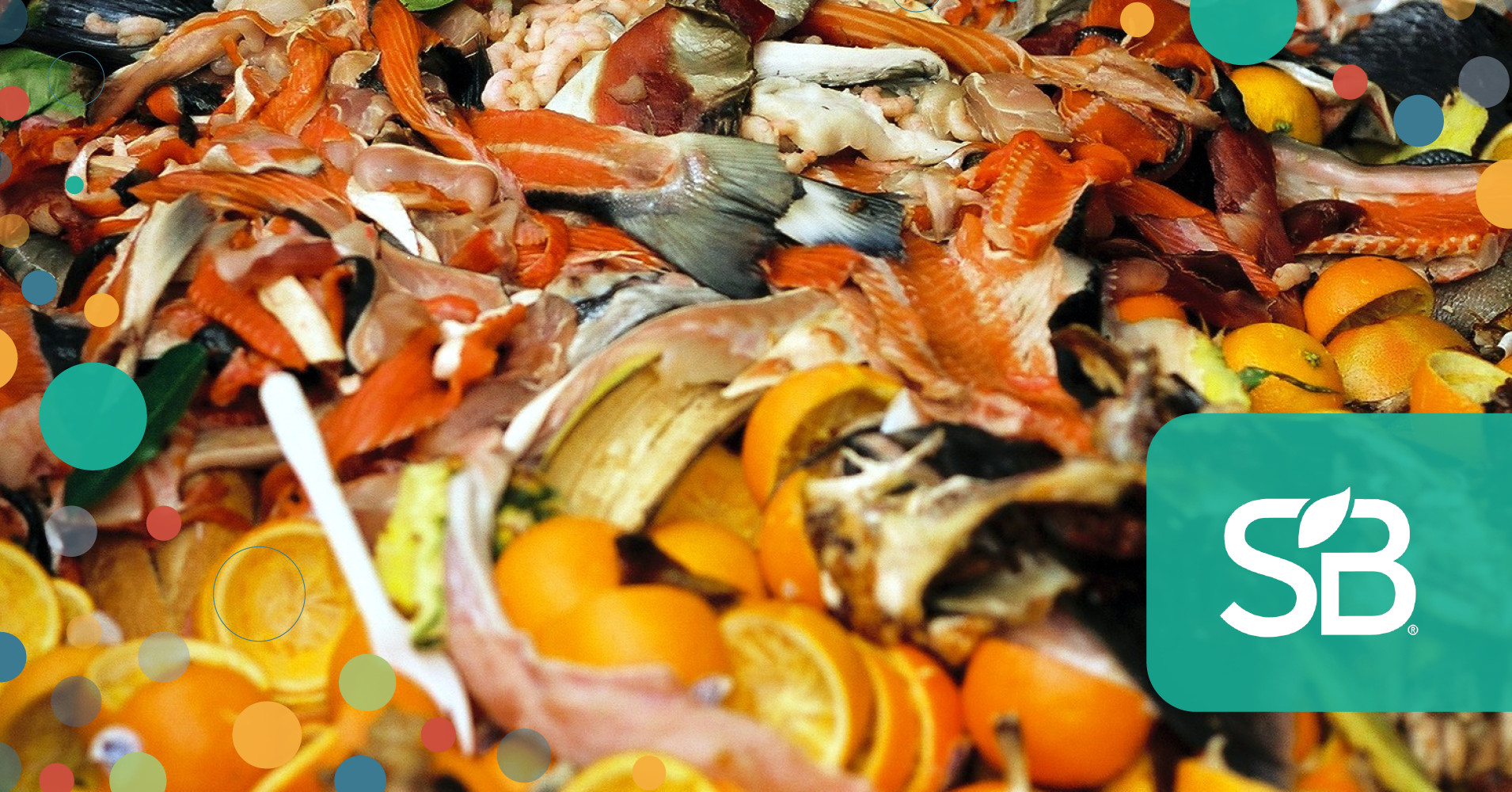This Technology May Tackle 2 Sustainability Challenges in One Fell Swoop | Sustainable Brands
This Technology May Tackle 2 Sustainability Challenges in One Fell Swoop Sustainable Brands



About a 5 minute read.
Sustainable Development Goals (SDGs)
- Goal 2: Zero Hunger
- Goal 7: Affordable and Clean Energy
- Goal 12: Responsible Consumption and Production
- Goal 13: Climate Action
- Goal 15: Life on Land
Anaerobic Digestion: A Scalable Solution for Food Waste and Clean Energy Transition
Published 4 days ago.
Image: Wikimedia
Sponsored Content
This article is sponsored by Bioenergy Devco.
Anaerobic Digestion: A Sustainable Solution for Food Waste and Clean Energy Transition
Anaerobic digestion offers a solution to two major challenges: food waste and transitioning to clean energy. We spoke with Shawn Kreloff, founder and CEO of Bioenergy Devco, to discuss the technology’s potential.
Introduction
As individuals, companies, and the government work to be more sustainable, food waste remains a challenge. In the US alone, we waste 80 million tons of food per year, according to Feeding America; and that waste emits potent greenhouse gases including methane into the atmosphere. While composting is an option at the individual or smaller municipality level, it takes time and is difficult to scale. But a time-tested technology, anaerobic digestion, could be emerging as a scalable solution — thanks to companies such as Bioenergy Devco.
Interview with Shawn Kreloff, Founder and CEO of Bioenergy Devco
Sustainable Brands® spoke with Shawn Kreloff, founder and CEO of Bioenergy Devco, to discuss how this innovative technology is a scalable solution for organizations and municipalities dealing with excess food waste.
How is anaerobic digestion different from other organics-recycling methods such as composting?
Shawn Kreloff: Anaerobic digestion (AD) is an organics-recycling process in which organic materials are broken down naturally by microorganisms in the absence of oxygen. AD provides numerous environmental advantages that are lacking when organic waste is sent to landfills, where its breakdown results in the emission of harmful greenhouse gases. Increasingly, AD is proving to be the preferred method for managing organic waste.
AD and composting are both processes that involve the decomposition of organic matter, but they differ in terms of the conditions under which they occur and the end products they produce. Unlike composting, anaerobic digestion not only produces a healthy soil amendment — it also generates biogas that can be used as a clean, renewable energy source.
What makes anaerobic digestion a scalable solution in this space?
Shawn Kreloff: Anaerobic digestion has significant advantages in the amount of food waste processed per acre. A typical, large AD plant can process 150,000 tons of food waste per year on approximately 5 acres. The average AD processing time (hold time) is 30 days, whereas windrow composting has a hold time of approximately 22 weeks.
What challenges or barriers might be hindering more widespread adoption for farmers or food manufacturers?
Shawn Kreloff: The United States is grappling with the dual challenges of advancing clean-energy initiatives and establishing effective organic-waste management strategies. A year since Congress injected substantial investments into the clean-energy transition, progress has been made; but hurdles persist. Private-sector interest in clean-energy initiatives has surged — yet the approval process for energy projects exposes critical flaws that, if left unaddressed, could thwart the realization of clean-energy goals. These challenges exist at every governmental level — from local municipalities to the federal government.
How is Bioenergy Devco helping organizations and municipalities with excess food waste?
Shawn Kreloff: Our Maryland Bioenergy facility is a great example of how we are helping organizations and municipalities with excess food waste. It serves a diverse range of stakeholders:
-
Food industry: For food processors, institutions, and companies faced with the challenge of disposing of organic waste sustainably, Bioenergy Devco provides an innovative and cost-effective solution. By partnering with them, these entities can enhance waste management, reduce operating costs, and meet corporate sustainability goals.
-
Municipalities: Collaboration with local and state governments and regional partnerships empowers the redirection of organic waste from landfills and incinerators. This approach not only supports broader zero-waste initiatives but also generates high-quality jobs and boosts local economies.
-
Waste haulers: Designed with efficiency in mind, the Jessup facility provides waste haulers with a layout that optimizes traffic flow and multiple scales for streamlined operations. Open for deliveries 24/7 and strategically located near I-95, it helps haulers reduce transportation costs and attract sustainability-focused customers.
The Maryland Bioenergy Center is designed to recycle an impressive 110,000 tons of organic waste each year into natural gas and nutrient-rich soil digestate. The renewable natural gas produced at the facility, estimated to reach a staggering 312,000 MMBtu annually, represents a significant contribution to the region’s energy landscape. This renewable natural gas can be utilized for various applications — from direct piping to utilities to green hydrogen production, offering an eco-friendly alternative to conventional natural gas sources.
In addition, the facility generates over 16,000 tons of rich, fertile soil amendment — which is an invaluable resource for agriculture and land use that contributes to healthier soil and fosters improved crop growth.
SDGs, Targets, and Indicators
1. Which SDGs are addressed or connected to the issues highlighted in the article?
- SDG 2: Zero Hunger
- SDG 7: Affordable and Clean Energy
- SDG 12: Responsible Consumption and Production
- SDG 13: Climate Action
- SDG 15: Life on Land
The article discusses the issue of food waste and its impact on greenhouse gas emissions, clean energy production, and sustainable waste management. These issues are directly connected to the SDGs mentioned above.
2. What specific targets under those SDGs can be identified based on the article’s content?
- SDG 2.1: By 2030, end hunger and ensure access by all people, in particular the poor and people in vulnerable situations, including infants, to safe, nutritious and sufficient food all year round.
- SDG 7.2: By 2030, increase substantially the share of renewable energy in the global energy mix.
- SDG 12.3: By 2030, halve per capita global food waste at the retail and consumer levels and reduce food losses along production and supply chains, including post-harvest losses.
- SDG 13.3: Improve education, awareness-raising and human and institutional capacity on climate change mitigation, adaptation, impact reduction and early warning.
- SDG 15.3: By 2030, combat desertification, restore degraded land and soil, including land affected by desertification, drought and floods, and strive to achieve a land degradation-neutral world.
The article highlights the importance of addressing hunger, increasing renewable energy use, reducing food waste, raising awareness about climate change, and promoting sustainable land use. These targets align with the specific SDGs mentioned above.
3. Are there any indicators mentioned or implied in the article that can be used to measure progress towards the identified targets?
- Indicator 2.1.1: Prevalence of undernourishment
- Indicator 7.2.1: Renewable energy share in the total final energy consumption
- Indicator 12.3.1: Food loss index
- Indicator 13.3.1: Number of countries that have integrated mitigation, adaptation, impact reduction and early warning measures into national policies, strategies and planning
- Indicator 15.3.1: Proportion of land that is degraded over total land area
The article does not explicitly mention these indicators, but they can be used to measure progress towards the identified targets. These indicators provide specific metrics to assess the prevalence of undernourishment, renewable energy share, food loss, climate change integration, and land degradation.
Table: SDGs, Targets, and Indicators
| SDGs | Targets | Indicators |
|---|---|---|
| SDG 2: Zero Hunger | 2.1: By 2030, end hunger and ensure access by all people, in particular the poor and people in vulnerable situations, including infants, to safe, nutritious and sufficient food all year round. | Indicator 2.1.1: Prevalence of undernourishment |
| SDG 7: Affordable and Clean Energy | 7.2: By 2030, increase substantially the share of renewable energy in the global energy mix. | Indicator 7.2.1: Renewable energy share in the total final energy consumption |
| SDG 12: Responsible Consumption and Production | 12.3: By 2030, halve per capita global food waste at the retail and consumer levels and reduce food losses along production and supply chains, including post-harvest losses. | Indicator 12.3.1: Food loss index |
| SDG 13: Climate Action | 13.3: Improve education, awareness-raising and human and institutional capacity on climate change mitigation, adaptation, impact reduction and early warning. | Indicator 13.3.1: Number of countries that have integrated mitigation, adaptation, impact reduction and early warning measures into national policies, strategies and planning |
| SDG 15: Life on Land | 15.3: By 2030, combat desertification, restore degraded land and soil, including land affected by desertification, drought and floods, and strive to achieve a land degradation-neutral world. | Indicator 15.3.1: Proportion of land that is degraded over total land area |
Behold! This splendid article springs forth from the wellspring of knowledge, shaped by a wondrous proprietary AI technology that delved into a vast ocean of data, illuminating the path towards the Sustainable Development Goals. Remember that all rights are reserved by SDG Investors LLC, empowering us to champion progress together.
Source: sustainablebrands.com

Join us, as fellow seekers of change, on a transformative journey at https://sdgtalks.ai/welcome, where you can become a member and actively contribute to shaping a brighter future.







